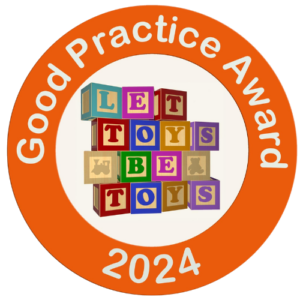
When creating the Little Wise Toys range of educational toys for 3-6 year olds, one of the important things I wanted to do was create opportunities for hands-on learning. This is because the benefits of this type of learning from a young age are very powerful. In this blog I will share seven ways that the hands-on approach of the Little Wise Toys activity sets (and this type of learning in general) can benefit young children.
What is hands-on learning?
Firstly, what exactly is hands-on learning? It is a process of ‘learning by doing’, rather than simply being told about something. The term is used because it usually involves physically using the hands.
Seven benefits of hands-on learning
- When children learn with both their hands and their minds they are more likely to be fully engaged in the learning process as well as more focused and motivated to learn. This is because a child is an active participant in the activity, rather than simply being shown what to do. This can also encourage a longer attention span which can, in turn, help children to build knowledge and increase their long-term memory.
- Hands-on activities also allow children to use their senses while learning. When playing with the Little Wise Toys kits children can see, touch, and move real objects to complete tasks. This means that the letters, numbers, shapes, colours, characters and so on are brought to life. In turn, this can really help children to begin to understand the meaning behind what they are doing.
- Because hands-on learning enables children to get involved in the learning process, it can also make it more fun. For example, children can select and use the variety of tabs in the Little Wise Box of Maths for counting, sorting and organising instead of just being taught the theory via books or pencil and paper exercises; they can bring stories to life and explore how the world works using the themed boards and characters in the collage kits; they can also get hands on using their emotions tabs while exploring and learning about emotions and feelings in the Little Wise Box of Emotions; and they can hunt out different letters and start to bring new words to life by selecting, organising and placing them on their magnetic tablet in the Little Wise Box of Phonics.
- Hands-on learning is great for brain development too. This is because when activities require multiple processes such as using the hands, talking and listening, more areas of the brain are activated than with activities that involve single processes. This can help to expand and strengthen neural connections in the brain, which is essential in the early years of life.
- Introducing this type of learning from a young age is also great for nurturing problem solving skills. This is because it allows children to think on their feet as well as give them the confidence needed to solve problems.
- An additional benefit of ‘learning by doing’ is that it provides the opportunity for children to keep on practising until they are able to work something out. I remember one mum who bought the Little Wise Box of Maths sharing how their daughter loved that they didn’t need to keep on rubbing things out but could just keep on playing around with the different tabs until they solved the problem.
- Last, but by no means least, hands-on activities are great for strengthening fine motor skills. These are skills associated with the smaller muscles in the hands that are needed for gripping and grasping. The very act of using the Little Wise Toys kits and picking up and placing the different magnetic tabs helps to strengthen these. In turn, this also helps young children with additional important areas such as handling pencils, rubbers, scissors, cutlery and so on.
Here’s to all of the benefits that hands-on learning offers and making learning fun and engaging for all the wise little ones out there.








Recent Comments